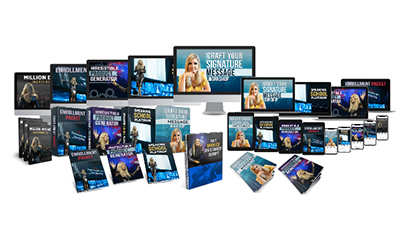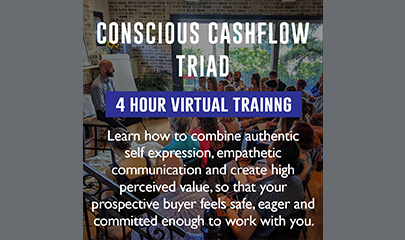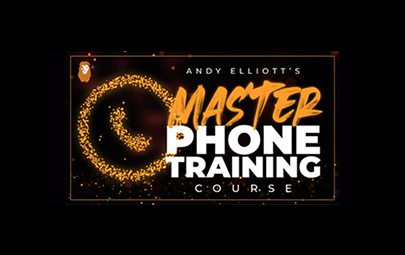-
×
 Understanding Disorders of the Brain By Sandy Neargarder
1 × $5,00
Understanding Disorders of the Brain By Sandy Neargarder
1 × $5,00 -
×
 Understanding and Overcoming Fear By Margee Kerr
1 × $5,00
Understanding and Overcoming Fear By Margee Kerr
1 × $5,00 -
×
 How to Use Brain Science to Help Patients Accelerate Healing after Trauma By NICABM
1 × $39,00
How to Use Brain Science to Help Patients Accelerate Healing after Trauma By NICABM
1 × $39,00 -
×
 Lucid Dreaming Summit by Awake Academy
1 × $85,00
Lucid Dreaming Summit by Awake Academy
1 × $85,00 -
×
 The Hidden Spirituality of Men: Ten Metaphors to Awaken the Sacred Masculine by Matthew Fox
1 × $5,00
The Hidden Spirituality of Men: Ten Metaphors to Awaken the Sacred Masculine by Matthew Fox
1 × $5,00 -
×
 Conscious Growth Bundle By Shefali Tsabary
1 × $389,00
Conscious Growth Bundle By Shefali Tsabary
1 × $389,00 -
×
 Advanced Financial Modeling 2024 By Breaking Into Wall Street
1 × $69,00
Advanced Financial Modeling 2024 By Breaking Into Wall Street
1 × $69,00 -
×
 Venture Capital And Growth Equity Modeling 2024 By Breaking Into Wall Street
1 × $46,00
Venture Capital And Growth Equity Modeling 2024 By Breaking Into Wall Street
1 × $46,00 -
×
 Million Dollar Masterclass By Eileen Wilder
1 × $85,00
Million Dollar Masterclass By Eileen Wilder
1 × $85,00 -
×
 VIRTUOSITY by Scot McKay
1 × $23,00
VIRTUOSITY by Scot McKay
1 × $23,00 -
×
 Excel And VBA 2024 By Breaking Into Wall Street
1 × $46,00
Excel And VBA 2024 By Breaking Into Wall Street
1 × $46,00 -
×
 Oral Sex Mastery by Pleasure Mechanics
1 × $69,00
Oral Sex Mastery by Pleasure Mechanics
1 × $69,00 -
×
 Wired For Weight Loss By Mark Patrick
1 × $23,00
Wired For Weight Loss By Mark Patrick
1 × $23,00 -
×
 9 Day Calendar Deep Dive 2023 By Jay Bailey - Sheridan Options Mentoring
1 × $31,00
9 Day Calendar Deep Dive 2023 By Jay Bailey - Sheridan Options Mentoring
1 × $31,00 -
×
 Environment Translation Pack By Vaness Henry
1 × $31,00
Environment Translation Pack By Vaness Henry
1 × $31,00 -
×
 Sacred Success Coaching Method By Eden Carpenter
1 × $139,00
Sacred Success Coaching Method By Eden Carpenter
1 × $139,00 -
×
 eCom Fast Track Bundle By Justin Phillips
1 × $15,00
eCom Fast Track Bundle By Justin Phillips
1 × $15,00 -
×
 Real Estate And REIT Modeling 2024 By Breaking Into Wall Street
1 × $109,00
Real Estate And REIT Modeling 2024 By Breaking Into Wall Street
1 × $109,00 -
×
 Master Face Reading Program By Lillian Pearl Bridges
1 × $544,00
Master Face Reading Program By Lillian Pearl Bridges
1 × $544,00 -
×
 Core Financial Modeling 2024 By Breaking Into Wall Street
1 × $69,00
Core Financial Modeling 2024 By Breaking Into Wall Street
1 × $69,00 -
×
 Advanced Cycles By Nick Santiago - InTheMoneyStocks
1 × $171,00
Advanced Cycles By Nick Santiago - InTheMoneyStocks
1 × $171,00 -
×
 Be a Resilient Leader By Jason W Womack
1 × $5,00
Be a Resilient Leader By Jason W Womack
1 × $5,00 -
×
 The CEO Masterclass Replay By Elisa Canali
1 × $15,00
The CEO Masterclass Replay By Elisa Canali
1 × $15,00 -
×
 Weightless Wealth By Elisa Canali
1 × $31,00
Weightless Wealth By Elisa Canali
1 × $31,00
The Art of Storytelling: From Parents to Professionals By Hannah Harvey
$239,00 $5,00
SKU: KOB.52748eUCnsV
Category: Personal Development
Tags: Art, From Parents to Professionals, Hannah Harvey, The Art of Storytelling
The Art of Storytelling: From Parents to Professionals – Digital Download!
Let’s embark on a captivating adventure to uncover remarkable insights that spark your curiosity and elevate your understanding

The Art of Storytelling: From Parents to Professionals By Hannah Harvey
Overview

The Art of Storytelling: From Parents to Professionals
Introduction
In a world where communication skills can propel us and storytelling has become a craft revered in both personal and professional spheres, “The Art of Storytelling: From Parents to Professionals” by Hannah B. Harvey stands as a beacon for anyone looking to enhance their storytelling prowess. This comprehensive lecture series encapsulates the essence of storytelling, stretching across the relaxed atmosphere of family gatherings to the formalities of boardrooms. Through 24 meticulously crafted lectures, Harvey encourages individuals to tap into their creativity and share their stories in a way that resonates with audiences. By addressing crucial elements like character creation, plot structuring, and the nuances of expressive language, the series aims to empower listeners to engage effectively with their listeners. The exploration of storytelling not only elevates the art of communication but also emphasizes its relevance in connecting each of us as humans.
Overview of the Lecture Series
“The Art of Storytelling” consists of 24 engaging lectures that delve into various techniques essential for captivating storytelling. Harvey thoughtfully structures her content to include practical methods aimed at enhancing clarity and engagement. Below are some aspects covered in the series:
- Character Creation: Understanding how to build relatable and memorable characters that resonate with the audience.
- Plot Structuring: Techniques for crafting narratives that flow logically and maintain interest.
- Expressive Language: Utilizing language effectively to convey emotions and create vivid imagery.
- Audience Engagement: Methods for keeping the audience’s attention, building tension, and employing body language.
These components serve as the building blocks for effective storytelling across diverse contexts. Whether one is recounting a bedtime story or delivering a pivotal presentation, these lectures offer insights that elevate one’s storytelling abilities.
Reception and Effectiveness
Feedback from listeners illustrates mixed opinions about the series. Many praise Harvey’s engaging style, appreciating her ability to make complex concepts approachable. The interactive nature of the lessons, featuring exercises and “side coaching” sessions, bolsters participants’ confidence significantly. For example, one listener expressed that the practical exercises helped her understand how to inject humor into her stories, an element crucial for connecting with her audience.
However, the reception diverges regarding the chosen audiobook format. Some listeners expressed dissatisfaction, arguing that the absence of visual aids detracts from the teaching of storytelling techniques that rely heavily on visual storytelling. The series emphasizes that many aspects of storytelling like timing and body language are visual elements lost in audio-only formats.
Unpacking this criticism further reveals a recurring theme among reviewers. Some found Harvey’s delivery overly dramatic for personal storytelling, positing that it could overshadow authentic expressions. The balance of performance and sincerity becomes a delicate dance in the realm of storytelling. While some enjoy the theatrical aspect, others may find it lacking in authenticity when recounting personal experiences.
Pros and Cons of the Series
Pros
- Engaging and interactive teaching style.
- Emphasis on practical applications to enhance storytelling.
- Applicable techniques for various storytelling contexts.
Cons
- Some formats may underdeliver certain teaching elements, especially visual methods.
- Varied reception regarding the performative nature of Harvey’s delivery.
- Limited applicability for written storytelling in certain sections of the content.
Core Concepts and Techniques
Hannah B. Harvey champions specific storytelling techniques that stand out in her lectures. Each element not only serves to enhance the narrative but also fosters a connection with the audience. Here are the most pivotal techniques explored:
- Building Relatable Characters: Harvey discusses how relatable characters encourage emotional investment from the audience. By constructing characters with both flaws and strengths, storytellers can mirror life’s complexity, making the story feel genuine.
- Structured Plot Development: A coherent narrative structure helps guide listeners through the story without confusion. Utilizing classic structures, such as the hero’s journey, can serve as invaluable templates.
- Use of Body Language: While primarily audio-focused, the emphasis on non-verbal communication remains significant. Harvey encourages storytellers to practice and embody their characters, which enhances storytelling depth.
- Audience-Centric Storytelling: Understanding your audience is crucial. Harvey emphasizes adapting tales to suit different demographics and contexts, whether comforting a child or persuading a business partner.
These techniques guide budding storytellers through intricacies that go beyond simply relaying a tale. They shape personal and professional connections, becoming the threads that weave us together.
Emotional Resonance in Storytelling
One of the most compelling aspects of storytelling is its ability to evoke emotions. Harvey articulates that the art lies not just in crafting a story but in the emotional resonance it creates within the listener. Emotional storytelling acts as a bridge connecting the storyteller and the audience.
In one lecture, Harvey shares a poignant example of a parent recounting their childhood experiences. By tapping into childhood memories, the parent weaves a narrative rich with nostalgia, allowing listeners to reflect on their own experiences. Such a connection emphasizes the power of shared emotions in storytelling, making the experience more relatable and impactful.
Furthermore, Harvey encourages storytellers to find their emotional voice. By sharing personal vulnerabilities, storytellers can create a safe space for audiences to relate, fostering deeper connections. This aspect is significant, as emotional narratives can promote understanding and build empathy a fundamental part of communication.
Examples of Emotionally Charged Storytelling
- Nostalgic Parental Tales: Stories of childhood allow listeners to revisit their past, creating an emotional tapestry rich with shared experiences.
- Overcoming Personal Challenges: Narratives of struggles and triumph often resonate deeply, inspiring others to face their challenges.
- Human Connections: Stories emphasizing love, friendship, and loss can trigger profound emotional responses, fostering a greater understanding of our shared humanity.
Conclusion
In summary, “The Art of Storytelling: From Parents to Professionals” by Hannah B. Harvey emerges as a comprehensive resource that covers the multifaceted approach to narrating stories. While the series is largely praised for its engaging style and practical insights, it also faces critique regarding its format and performance delivery. Nevertheless, the techniques taught within the lectures serve as an invaluable toolkit for anyone wishing to enhance their storytelling capabilities. This series underscores the inherent power of storytelling in forging connections, fostering understanding, and ultimately enhancing human communication across various contexts. Whether it’s around a cozy family dinner or within the strict confines of a corporate environment, storytelling remains a vital skill that deserves our attention and practice.
Frequently Asked Questions:
Innovation in Business Models: We use a group purchase approach that enables users to split expenses and get discounted access to well-liked courses. Despite worries regarding distribution strategies from content creators, this strategy helps people with low incomes.
Legal Aspects to Take into Account: Our operations’ legality entails several intricate considerations. There are no explicit resale restrictions mentioned at the time of purchase, even though we do not have the course developers’ express consent to redistribute their content. This uncertainty gives us the chance to offer reasonably priced instructional materials.
Quality Control: We make certain that every course resource we buy is the exact same as what the authors themselves provide. It’s crucial to realize, nevertheless, that we are not authorized suppliers. Therefore, the following are not included in our offerings: – Live coaching sessions or calls with the course author.
– Entry to groups or portals that are only available to authors.
– Participation in closed forums.
– Straightforward email assistance from the writer or their group.
Our goal is to lower the barrier to education by providing these courses on our own, without the official channels’ premium services. We value your comprehension of our distinct methodology.
Be the first to review “The Art of Storytelling: From Parents to Professionals By Hannah Harvey” Cancel reply
You must be logged in to post a review.
Related products
Personal Development
Personal Development
The Performance Stretch System Level 1 By The Stretch Therapists
Personal Development
Training the Electric/Magnetic Lines of Force with Movement By Sixty Skills
Personal Development
Online – The Demartini Values Training Program – USA 2020 (Videos Only) By Dr John Demartini
Personal Development
Personal Development
Persuasion In Action Total Immersion Video Footage Collection By Ross Jeffries


















Reviews
There are no reviews yet.